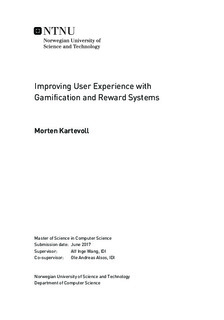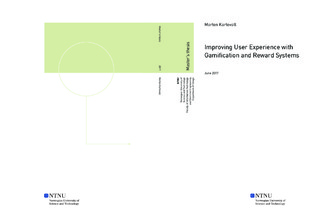| dc.description.abstract | The use of mobile technology is steadily increasing in the modern society. Smartphones and tablets have already surpassed desktops on internet usage in 2016. As the possibilities to use these technologies as tools are endless, games have in particular become an attractive field of research to check whether they can have other uses than entertainment. Games are also more often being played by children in Norwegian, with 77% of children between 9 and 15 years old playing at least one or more electronic game on an average day in 2015. Statistics also prove that children lack motivation towards doing chores as lower than 50% of children between ages of 9 and 15 years old did help with daily housework in Norway 2010. This study tries to take advantage of the increasing use of smartphones and tablets to motivate and encourage more children to help with housework by the use of gamification. However, the features of gamification are often poorly implemented and are therefore weakening the intention of it by having a reversed effect. This study also attempts to find a better and more satisfying use of this method by implementing a reward model based on gamification mechanics and theory.
The first part of this study will present a detailed review of game design theory, game mechanics, the positive and negative effects of gamification, and motivation theory related to games. Further, a brief overview of application related to chores is presented to find flaws and good uses of game mechanics. The findings from this part serve as a foundation for the proposed solution which attempts to enhance the children s motivation, engagement, and enjoyment towards doing chores. Finding the quality of these perceptions was done by conducting an experiment, where 22 children participated. The analysis has also revealed the usability of the proposed solution.
Findings from the experiment suggest that the solution positively affects every category of the perceptions examined. However, several flaws and improvements are found and can be dealt with to increase the affected perceptions further. Lastly, a reward model can not single handily contribute to making a task's motivation intrinsic as it does not necessarily have a direct impact on its execution. | |

